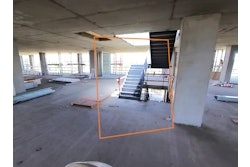
Building Information Modelling (BIM) has become a cornerstone of modern construction, particularly in the rapidly evolving markets of the UAE and the broader Cooperation Council for the Arab States of the Gulf (GCC) region. Despite its widespread adoption, many organizations struggle to unlock its full potential due to challenges such as suboptimal implementations, outdated configurations, or evolving business requirements.
For construction consultants and systems integrators operating in this region, there is a unique opportunity to help clients maximize their ROI from existing BIM investments through strategic ways.
Technology: BIM Software Solutions for the UAE and GCC Market
There are many key platforms crucial for massive projects, from Dubai skyscrapers to endless infrastructure in Saudi Arabia. But here's the catch: many companies aren't fully tapping into the power of BIM, partly because of region-specific challenges like high staff turnover and a shortage of expertise.
The Global BIM Market Report and Forecast 2024-2032 stated that the Building Information Modelling (BIM) market was valued at $9.60 billion in 2023. It is projected to expand at a compound annual growth rate (CAGR) of 16.4% from 2024 to 2032, reaching an estimated value of $37.67 billion by 2032.
Problem: Underutilization and Inefficiencies in the GCC
Construction projects in the UAE and GCC region face distinct challenges that can hinder the effective use of BIM:
- High Staff Turnover and Skill Gaps: The GCC construction sector sees a lot of staff turnover, which can leave companies without the BIM expertise and support they need to make the most of their software.
- Initial Implementation Issues: Quick-paced projects can lead to rushed BIM setups that don't quite match project needs, causing issues like data silos and workflow problems.
- Evolving Project Needs: As the GCC construction scene evolves, project requirements shift too. This means constant tweaks and updates to the BIM system, which might be tricky without the right support.
Why it Matters: Business Impact in the GCC
A study conducted by Dodge Data & Analytics indicates that 85% of professionals in the Architecture, Engineering, and Construction (AEC) industry report a decrease in a project's final construction costs when leveraging BIM. This underscores the effectiveness of BIM in reducing rework, and enhancing collaboration, ultimately leading to a more cost-efficient project outcome. For construction firms in the UAE and GCC, not fully leveraging BIM can have significant consequences and fallback from competition if not integrated in today’s day and age:
• Cost Overruns and Delays: If BIM isn't optimally used, projects can face delays, increased costs, and coordination challenges among stakeholders. This is especially critical in the region's invested, large-scale and high-profile projects.
• Reduced Market Competitiveness: In a region that's rapidly becoming a centre for innovation and tech-driven construction, companies that don't keep their BIM systems up-to-date risk falling behind competitors.
• Inconsistent Quality Standards: With the wide range of projects in the GCC, from commercial developments to complex infrastructure, maintaining consistent quality is key. Insufficient BIM use can result in quality issues, impacting the reputation of both consultants and contractors.
Scenarios and Practical Approaches to Address BIM Challenges
Scenario 1: High Staff Turnover and Skill Gaps
Challenge
Back in 2023, over 80% of RICS survey respondents worried about talent shortages. Construction consultancies in the UAE grapple with frequent staff turnover, leading to a loss of BIM expertise and hindering the utilization of advanced BIM features. This situation has resulted in project delays and increased errors in project documentation.
Recommended Approach
1. BIM Resource Pooling: Create a shared resource pool of BIM specialists who can be flexibly assigned to different projects as required. This strategy ensures continuity even when key team members depart.
2. Comprehensive Training Programs: Establish ongoing training initiatives aimed at enhancing the skills of existing staff and swiftly integrating new hires. Develop training modules tailored to the specific requirements of the GCC construction sector.
3. Mentorship and Knowledge Transfer: Introduce a mentorship system where seasoned BIM professionals within your organization mentor junior colleagues, facilitating knowledge retention and addressing skill gaps effectively.
Scenario 2: Initial Implementation Issues
Challenge
A hasty BIM implementation driven by tight project deadlines can lead to fragmented workflows and integration challenges with existing project management systems, causing coordination issues and data silos.
Recommended Approach
- BIM Health Check: Conduct a comprehensive audit of the existing BIM setup to identify gaps and misalignments with project requirements. Assess the configuration, data management practices, and interoperability with other systems.
- Workflow Optimization: Re-engineer workflows to ensure seamless data flow between BIM and other project management tools.
- Pilot Project for Reconfiguration: Implement a pilot project to test and refine new configurations before rolling them out across other projects. This controlled approach minimizes disruption while ensuring optimal setups.
Scenario 3: Evolving Project Needs
Challenge
A complex infrastructure project with multiple scope changes can strain an inadequately configured BIM setup, leading to inefficiencies, delays, and increased costs.
Recommended Approach
- Dynamic BIM Modeling: Upgrade the BIM setup to incorporate dynamic modelling capabilities that allow for real-time adjustments to project scope. This may include integrating parametric design features that adapt to changing requirements.
- Scalable BIM Configurations: Configure BIM systems to be modular and scalable, allowing for quick reconfigurations as project needs evolve. This is particularly useful for large-scale projects where scope changes are common.
- Proactive Change Management: Develop a proactive change management strategy that includes regular stakeholder meetings and a dedicated team to handle scope adjustments within the BIM environment.
Solution: How Do You Effectively Implement BIM for Middle Eastern Construction Projects?
For construction consultants in the UAE and GCC, implementing the following strategies can assist clients in maximizing their BIM investment:
1. Assessing the BIM System’s Compliance with Regulations Conduct a thorough assessment of the client's BIM implementation to ensure compliance with local regulations and standards. This review should evaluate software setups, workflows, and data management practices tailored to the region's distinct project needs.
2. Customizing Training and Skill Development Arrange specialized training sessions that tackle the specific challenges encountered by construction teams in the GCC. This includes customized content on model coordination, clash detection, and integration with locally relevant project management systems. Enhancing the team's skills can promote effective BIM utilization throughout all project phases.
3. Upgrading the Software and Custom Configurations Recommend clients to upgrade to the latest software versions that offer features suitable for the region's intricate construction requirements, such as improved visualization for large projects or enhanced compatibility with local regulatory frameworks. Customizing the software to align with local project needs can significantly boost efficiency and reduce errors.
4. Offering Ongoing Support and Regional Expertise Offer continuous support, including regular assessments and updates on best practices specific to the region. Consultants should guide clients on aligning BIM strategies with the evolving construction landscape in the GCC, incorporating new sustainability standards or digital twin technology for smart city initiatives.
5. Engaging External Experts into the Conversation In most cases where internal resources are insufficient, suggest collaborating with local BIM specialists or involving the software provider to address complex challenges. External consultants with expertise in GCC-specific obstacles can provide valuable assistance for advanced configurations, cloud services, and regression testing. But these need to be ensured with confidentiality and full transparency to clients without any breaches.
For construction consultants and system integrators in the UAE and GCC, maximizing ROI with BIM goes beyond just implementing the technology. It requires a strategic approach that considers the unique challenges and opportunities of the region. By conducting comprehensive BIM audits, providing tailored training, and offering ongoing support, consultants can help their clients transform their existing BIM systems into powerful tools that enhance project outcomes, reduce costs, and maintain competitiveness in a dynamic market.
For those looking to enhance their BIM capabilities and ensure they are getting the most from their technology investment, professional construction consultants in the GCC region assist with specific needs and they can be the key to unlocking significant long-term value for your projects.















